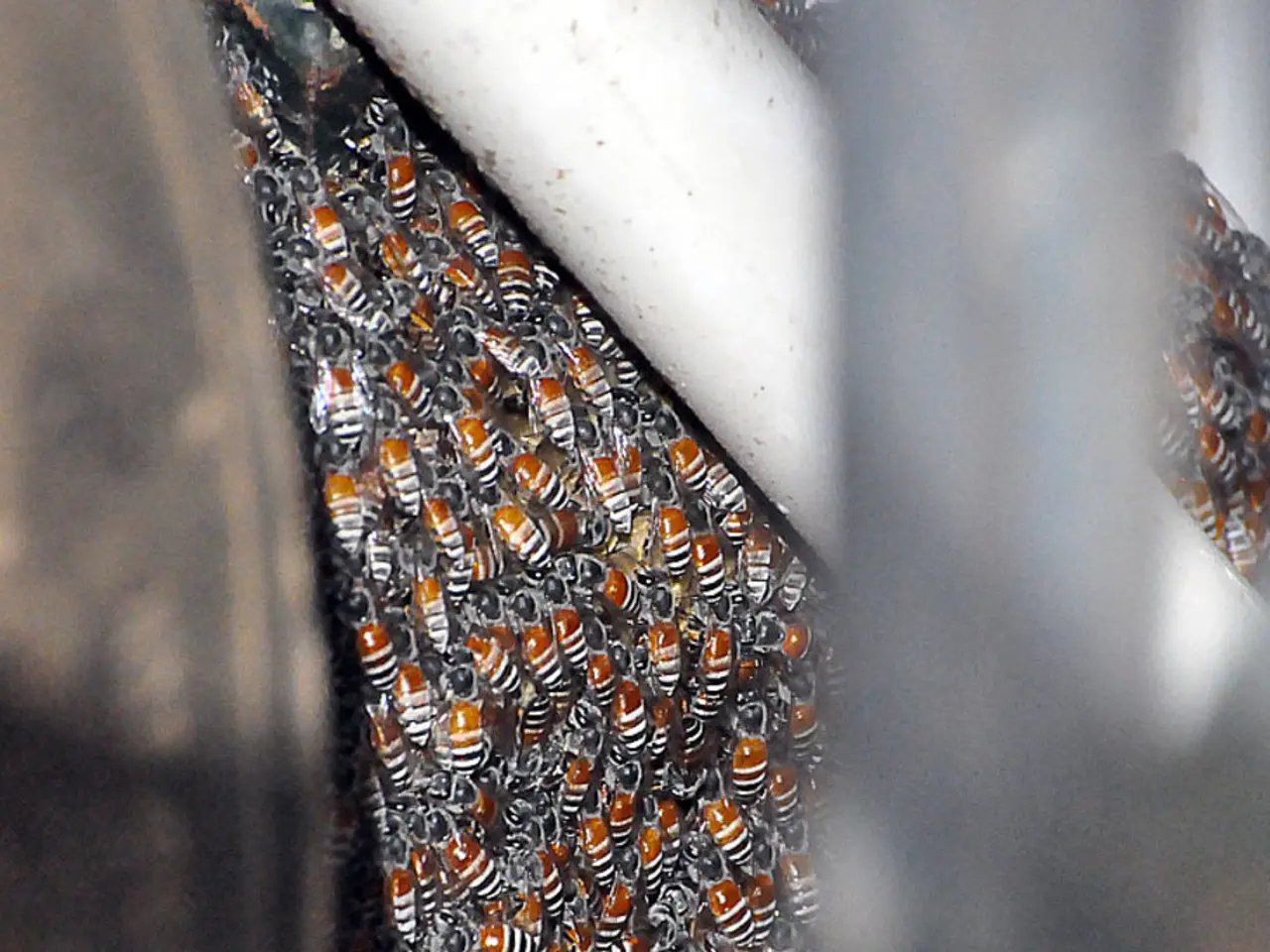Distinguishing Carpenter Bees from Bumble Bees: Identification Insights
Bumble bees and carpenter bees might seem similar at first glance, but these two species have distinct characteristics and roles in our ecosystem.
Bumble bees are invaluable pollinators for crops like tomatoes and peppers. Unlike honey bees, they do not live in hives, and can often be seen flying in and out of holes in the ground. One unique trait of bumble bees is their buzz pollination technique, where they vibrate flowers to release pollen.
On the other hand, carpenter bees are another type of pollinator, but they have a different lifestyle. Carpenter bees burrow into wood to lay eggs, creating small round holes. If they target your home, they can become a pest. Carpenter bees are usually identified by their smooth, shiny black abdomen and black head, resting near your porch and hovering around flowers. This matches the typical appearance and behaviour of carpenter bees, contrasting with the fuzzy, striped abdomens of bumblebees.
While bumble bees should be left alone when possible, carpenter bees might need management if they're burrowing into your home. Preventing carpenter bees can be achieved by sealing wood surfaces or using steel wool to fill old nests.
It is essential to remember that both species play crucial roles in pollinating flowers and maintaining a healthy environment. This article was created using AI technology, fact-checked, and edited by a website editor to ensure accuracy and clarity.








